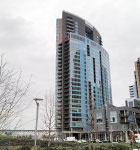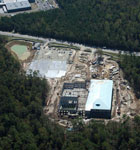Ace Air has been around since 1994. The couple that owned it wanted to retire, so I acquired it in 2008. It’s a reputable business with a large customer base, and that made it attractive to buy rather than starting my own business. And HVAC is a stable business out here because one thing we can’t live without in Arizona is air-conditioning.
The biggest surprise after I bought the business was the economic downturn. There had been a construction boom, and when the recession hit in 2008, that affected everything. We made some modifications and tightened our belts. We were doing commercial buildings and new homes at first but stopped doing that because there were a lot of bankruptcies in those markets. We focus now on HVAC replacements. With units running at a very high cyclical rate of about 5,700 hours a year, there’s always a need for replacements.
At the same time, we were looking for opportunities to expand our customer base. We went from a customer base of 30,000 a year to 120,000 by acquiring financially struggling businesses. We started with small acquisitions and moved to larger ones. So far we have acquired 12 companies with anywhere from several hundred thousand dollars up to $5 million in annual revenue.
We’ve had 25–40 percent annual growth since 2008. When we took over Ace Air, we had [fewer] than 50 employees. Now, in the peak season in July, we have about 250 employees. We went from about 20 trucks to 120 trucks, vans, and cars, so we’ve quadrupled all of our capacity. We occupy about 50,000 square feet of space that includes warehousing, our own metal shop, and computers to design HVAC systems.
“HVAC is a stable business out here because one thing we can’t live without in Arizona is air- conditioning.”
Kwan Jin, President
What sets us apart is that we do whatever it takes to make the customer happy. “How can we provide you with excellent service today?”—that is how we answer our phones. We deal with 120,000 angry customers every year. They’re hot, and they’re not happy about spending money. We’ve had cases where a technician goes to a house owned by an elderly couple, takes them to a hotel, gets their air-conditioning running, and takes them home again. That’s the level of service we offer. FiberThane came onto the market at the beginning of September 2011, but we didn’t expect to sell anything until we got printed materials in the hands of our customers. In fewer than two months, without a catalog, we’d sold more than 1,000 lineal feet.
We do quality checks with all of our customers. If we’re doing a unit installation, we do a pre- and postinspection to make sure that we do a good job and keep referrals coming. That’s the Lexus and Mercedes approach.
Now we’re looking into different markets and businesses with a customer base that we can add to. It gets a little slow here in October and November, and we want to offset the seasonal drop in cash flow here by looking at opportunities in colder climates such as Denver. At the same time, we’re looking at similar markets as this—Tucson [in Arizona], Houston, San Antonio, Las Vegas, Los Angeles—where we can acquire a business with $5 million in annual revenue that’s been around about 20 years with a customer base of 30,000 to 50,000.
We’re cautiously optimistic. We want to make sure our business model works here without any glitches before we take it to other markets. We’re doing all our due diligence before we enter another market, and we want to build our cash reserves. We want to make sure that if we go into a market and we have a hard time, we’ll have enough cash to sustain it. ABQ


